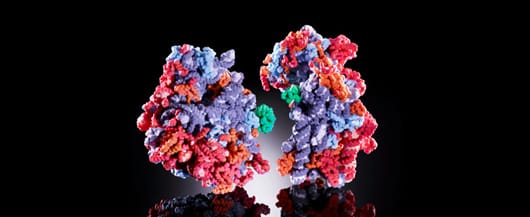Synthetic Biologists Synthesize Semi-synthetic Ribosomes

Researchers have been trying to synthesize fully functional ribosomes in their laboratories for some time now without much success. Until now they have been using constituent parts of ribosomes to build new ones, and it hasn’t yielded much success as they have always ended up with poorly functional ribosomes outside the cellular environment. But not anymore, as the synthetic biologists from Northwestern University along with researchers from Harvard Medical School have for the first time successfully synthesized these ribosomes in a test tube.
Instead of following the conventional approach involving the use of constituent parts of the ribosomes or attempting to combine synthesis and assembly of ribosomes in a single step, they decided to mimic the natural synthesis of ribosomes by utilizing natural cellular enzymes to facilitate the in-vitro construction of these cellular structures.
The four year research project has yielded a breakthrough that will be helpful in the discovery and development of new antibiotics targeting ribosome assembly, by understanding the process of formation and functioning of ribosomes. The ribosome synthesis process can also be used to create ribosomes that can produce custom proteins, which otherwise is difficult to produce in living organisms.
The main function of ribosomes in a cell is to produce proteins by translating the code present on mRNA. The process used to create these synthetic ribosomes is called “integrated Synthesis, Assembly and Translation” (iSAT) Technology and it mimics nature to enable ribosome synthesis, assembly and function in a single reaction in a same compartment.
In their approach to in-vitro construction of ribosomes, the team of researchers headed by Michael C. Jewett and George M. Church of Northwestern University and Harvard Medical School respectively have added the genes encoding rRNA, natural ribosomal proteins and additional E-coli enzymes together into a test tube to obtain results. Activity of these self assembled semi-synthetic ribosomes was assessed by its ability to translate the luciferase protein. iSAT was also used to produce modified ribosome with point mutation that mediates resistance to antibiotic clindamycin.
The team now plans to work on synthesizing all parts of the ribosome. The research has been published in Nature’s Molecular Systems Biology Journal.
Source: Northwestern University

